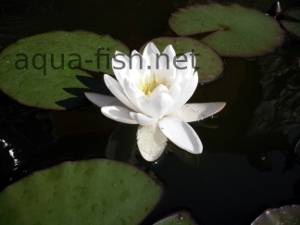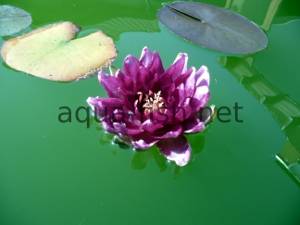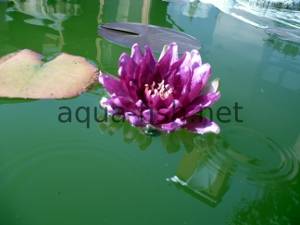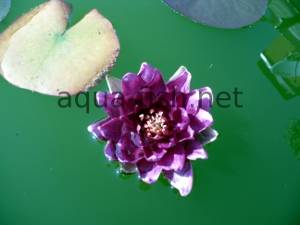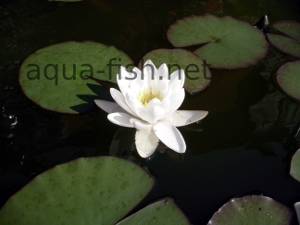Comprehensive Guide to Pond Plants: Choosing and Caring for Various Species
Quick Links
Introduction
Pond plants play a vital role in creating a balanced ecosystem in your pond. They help maintain water quality, provide shelter for fish, and reduce algae growth. In this guide, we'll explore different types of pond plants, how to choose the right ones, and provide essential care tips to keep your pond flourishing all year round.
Choosing the Right Plants
When selecting plants for your pond, consider factors like pond size, water depth, sunlight exposure, and the types of fish you have. A balanced mix of floating, submerged, and marginal plants will create a diverse and healthy pond environment. For example, floating plants help provide shade, while oxygenators enhance the water's oxygen levels, supporting fish and other aquatic life. Always research the growth rate and care needs of each plant species to prevent overcrowding.
General Care Tips
Before planting, research each plant's specific requirements, such as planting depth, sunlight needs, and water temperature preferences. Cover plant baskets with gravel to prevent fish from disturbing the roots. Ideally, cover about 50-70% of your pond's surface with floating or leafed plants to control algae growth. Avoid using regular garden soil; instead, use aquatic compost for better water quality and plant health. Adding fertilizer tablets to plant baskets during the growing season can also promote vigorous growth.
Water Lilies (Nymphaea spp.)
Water lilies are popular for their beautiful blooms and floating leaves. They not only provide shade but also help reduce algae by blocking sunlight. Plant them in aquatic compost in baskets and cover the compost with gravel. Place them at a depth of 6-18 inches (15-45 cm), depending on the variety. Tropical water lilies prefer warmer climates and deeper water (up to 24 inches or 60 cm), while hardy lilies can withstand cooler temperatures.
Growing Tips: Prune old leaves regularly to encourage new growth and prevent decay in the water. If the plant grows too large, divide it in spring to maintain its size. Avoid placing lilies directly under waterfalls or fountains, as moving water can hinder blooming. Fertilize monthly during the growing season with slow-release aquatic plant tablets for vibrant blooms.
Oxygenators
Oxygenating plants release oxygen into the water, improving water quality for fish. They also absorb excess nutrients, helping to keep algae growth in check. Some examples include:
- Willow Moss (Fontinalis spp.) – Dark green, moss-like clumps that thrive on rocks and wood. Suitable for ponds in shaded areas.
- Goldfish Weed (Lagarosiphon major) – Long, green, finger-like growths; ideal for oxygenating water. This plant grows quickly and may need regular trimming to prevent it from taking over the pond.
- Water Carrot (Oenanthe fluviatilis) – Fern-like leaves that grow to the surface, producing delicate pale mauve flowers. It prefers shallow waters and should be planted in baskets to control its spread.
Additional Options: Consider adding hornwort (Ceratophyllum demersum), an easy-to-grow oxygenator that can be left floating or anchored in the substrate.
Free-Floating Plants
Free-floating plants provide shade, reduce algae growth, and give fish a place to hide. Examples include giant duckweed (Spirodela oligorrhiza), water lettuce (Pistia stratiotes), and water hyacinth (Eichhornia crassipes).
Growing Tips: Rinse plants well before adding them to the pond to remove pests or debris. Free-floating plants grow quickly, so thin them out regularly to prevent overcrowding and maintain a balanced pond ecosystem. In colder regions, move tropical floating plants indoors during winter.
Floating-Leafed Plants
Floating-leafed plants, like water lilies and lotus, provide shade and shelter for fish. They are typically planted at the bottom of the pond in shallow baskets. Start by placing the baskets at a shallow depth and gradually lower them as the plants grow to encourage strong root development.
Additional Options: Include plants like the yellow floating heart (Nymphoides peltata) for added color and variety.
Growing Tips: Regular pruning will help keep them healthy and prevent them from covering the entire pond surface. Remove dead leaves to prevent decay and maintain water quality.
Marginal Plants
Marginal plants grow along the edges of ponds and help with natural filtration. Examples include:
- Water Lotus (Nelumbo nucifera) – Large blooms that prefer shallow water (up to 6 inches or 15 cm deep). Plant in a wide, shallow container to accommodate their spreading rhizomes.
- Japanese Rush (Acorus gramineus) – Compact, grass-like plant ideal for smaller ponds. Grows best in partial shade.
- Marsh Marigold (Caltha palustris) – Produces lovely yellow flowers, thriving in shallow water or marshy areas.
- Horsetail Rush (Equisetum hyemale) – Tall, bamboo-like stems add vertical interest to pond edges. Best grown in shallow containers to limit its spread.
Growing Tips: Always plant marginal plants in containers to control their growth and prevent them from spreading excessively. Situate them on ledges or shelves around the pond edge to create a natural border.
Seasonal Care for Pond Plants
In winter, reduce pruning and avoid disturbing plant roots. Hardy plants like water lilies can stay in the pond, but tropical plants should be brought indoors. In spring, resume fertilization to support new growth. During summer, regularly prune overgrown plants to maintain balance in the pond and prevent them from shading the water excessively. In fall, remove dead leaves and debris to prepare the pond for winter.
Tip: Use a pond net to prevent fallen leaves from accumulating in the water during autumn.
Managing Common Pond Plant Problems
Even with proper care, pond plants can face various issues. Here are some common problems and how to address them:
- Algae Growth: Ensure at least 50% of the pond surface is covered by plants to block sunlight. Introduce more oxygenators to absorb excess nutrients.
- Pests (e.g., snails, aphids): Introduce natural predators like fish or use safe, pond-friendly pest control methods.
- Overcrowding: Regularly trim fast-growing plants like water lettuce and divide plants like water lilies in the spring.
- Water Quality: Use a pond filter and perform regular water changes to keep the environment clean. Avoid using fertilizers with high nitrogen content as they can promote algae blooms.
I hope this guide helps you select and care for the right plants to create a thriving pond ecosystem. Experiment with different plant combinations to find the best balance for your specific pond conditions.







